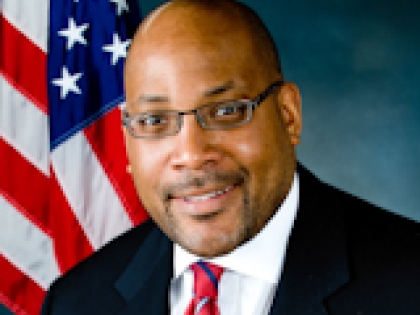
GOVERNOR CUOMO ANNOUNCES ADMINISTRATION INVESTIGATION FINDS AT LEAST $200 MILLION IN SANDY INSURANCE FUNDS HAVE NOT BEEN RELEASED BY BANKS TO HOMEOWNERS
Calls on Banks, Fannie Mae, and Freddie Mac to speed process to allow needed repairs
Nation's Four largest banks, Wells Fargo, Bank of America, Citibank and JP Morgan Chase, found holding more than 4,000 relief checks worth more than $130 million
Governor Andrew M. Cuomo today announced that a Department of Financial Services investigation uncovered $200 million in insurance funds from Superstorm Sandy that are being held by banks and have not yet been sent to homeowners who need the money to pay for necessary repairs.
The Cuomo Administration has sent letters to banks and mortgage servicers asking that they use maximum discretion and effort to speed the release of funds. The Department has also sent letters to Fannie Mae and Freddie Mac seeking emergency reforms of their rules and policies relating to the release of insurance funds by banks and servicers.
“Families need to be able to return to their homes and the State economy, which took a hit from Superstorm Sandy, needs the boost from spending on repairs. After insurance companies have sent homeowners checks to pay for repairs, the money should not be sitting with the bank because of red tape,” Governor Cuomo said. “Banks need to use maximum discretion to get money into homeowners’ hands as quickly as possible.”
DFS Superintendent Benjamin M. Lawsky said, “In December, we reached an agreement with the banks that resulted in freeing up a portion of insurance funds. But we are seeing now that the money is still not moving as quickly as homeowners need. While we understand there are some limits on how banks release funds, we want to make sure that they are pushing those limits and getting insurance money out quickly. We will work with Fannie Mae and Freddie Mac to reduce barriers to the flow of insurance funds.”
Many Storm Sandy victims receiving insurance claim checks are facing a hurdle that they often hadn’t anticipated: the check is issued jointly to the homeowner and that homeowner’s bank or mortgage servicer, thus requiring the bank’s endorsement of the check before the homeowner may access the funds. This dual endorsement is a standard requirement of mortgage notes and insurance contracts.
Before the banks will release the money, they may require proof of repair work, according to rules of the federal mortgage agencies, Fannie Mae and Freddie Mac. This has caused delays in homeowners receiving money they need to make repairs, in many cases so they can return to their homes.
DFS has received hundreds of complaints from New Yorkers frustrated by their bank or mortgage servicers’ failure to disburse these insurance proceeds. Homeowners say banks have either been too slow in processing paperwork or have placed too many conditions on homeowners before disbursing funds, thus resulting in delays to home repairs.
The Department of Financial Services has surveyed mortgage servicers about how much in insurance claims they are holding. As of late January, 27 servicers representing 95% of the New York market were holding proceeds for 6,611 borrowers for a total of about $208 million. The four largest banks, Wells Fargo, Bank of America, Citibank and JP Morgan Chase, are holding 4,159 checks worth $131 million.
These numbers are rising as more insurance checks are issued and as banks determine that more homeowners’ repairs need to be monitored since more money is now at stake for these homeowners.
In December, the Department and major banks reached an agreement that improved the situation by speeding advance checks to homeowners, but as larger insurance checks are issued, banks and servicers are still holding onto a significant amount of money and are reluctant to release this money without verification that the repairs are being made. The banks most frequently cite Fannie Mae and Freddie Mac guidelines as the reasons that they are not able to disburse more funds.
The Department believes that for homeowners who are current on their mortgages and did not suffer total or near total loss, banks should have substantial discretion to release funds. The Cuomo Administration is discussing with the federal mortgage agencies clarifying their rules.
In a letter to banks and mortgage servicers, the Department proposed the following best practices to speed the release of funds. Banks and servicers should:
1. Publish clear, easily accessible information on their websites describing the procedures required to release funds, providing copies of required forms, and listing direct contact information for consumer representatives.
2. Designate a single point of contact for homeowners.
3. Immediately release all funds designated by the insurance company as “emergency” or “advance” funds.
4. Permit submission of required documentation via fax and email. Storm Sandy-related faxes and emails should have a separate, designated fax number and email address to expedite processing.
5. Minimize the amount of documentation required during each phase of repair.
6. Hold all insurance proceeds in an interest bearing escrow account for the homeowner’s benefit.
7. Process all mail on the day of receipt.
8. Upon receipt of complete documentation, release proceeds the day of receipt.
9. In the event that they receive incomplete documentation, notify the homeowner immediately with detailed instructions on additional requirements.
10. For those with branches, accept paperwork and endorse checks at all branch locations.
11. Where proceeds cannot be released in person at a branch location, disperse funds via electronic transfer or overnight delivery.
12. Require inspection only if specifically required by investor guidelines.
13. Where inspection is required, deploy inspectors within two days of becoming aware of the homeowner’s request for such inspection.
14. Conduct all inspections at the servicer’s own expense.
15. Upon receipt of proof that homeowner is seeking only reimbursement for money already expended on home repairs, issue check or electronic transfer directly and exclusively to the homeowner.
16. Maintain sufficient staff to comply with all of the above practices.
###

